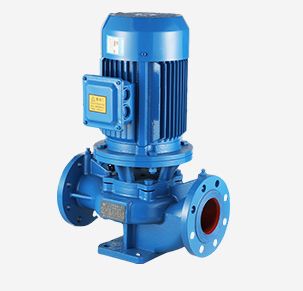Icelandic
- Afrikaans
- Albanian
- Amharic
- Arabic
- Armenian
- Azerbaijani
- Basque
- Belarusian
- Bengali
- Bosnian
- Bulgarian
- Catalan
- Cebuano
- Corsican
- Croatian
- Czech
- Danish
- Dutch
- English
- Esperanto
- Estonian
- Finnish
- French
- Frisian
- Galician
- Georgian
- German
- Greek
- Gujarati
- Haitian Creole
- hausa
- hawaiian
- Hebrew
- Hindi
- Miao
- Hungarian
- Icelandic
- igbo
- Indonesian
- irish
- Italian
- Japanese
- Javanese
- Kannada
- kazakh
- Khmer
- Rwandese
- Korean
- Kurdish
- Kyrgyz
- Lao
- Latin
- Latvian
- Lithuanian
- Luxembourgish
- Macedonian
- Malgashi
- Malay
- Malayalam
- Maltese
- Maori
- Marathi
- Mongolian
- Myanmar
- Nepali
- Norwegian
- Norwegian
- Occitan
- Pashto
- Persian
- Polish
- Portuguese
- Punjabi
- Romanian
- Russian
- Samoan
- Scottish Gaelic
- Serbian
- Sesotho
- Shona
- Sindhi
- Sinhala
- Slovak
- Slovenian
- Somali
- Spanish
- Sundanese
- Swahili
- Swedish
- Tagalog
- Tajik
- Tamil
- Tatar
- Telugu
- Thai
- Turkish
- Turkmen
- Ukrainian
- Urdu
- Uighur
- Uzbek
- Vietnamese
- Welsh
- Bantu
- Yiddish
- Yoruba
- Zulu
Telephone: +86 13120555503
Email: frank@cypump.com
júl . 27, 2024 02:21 Back to list
Exploring the Benefits and Applications of Submersible Sewage Pumps in Wastewater Management Systems
Submersible Sewage Pumps An Essential Component of Wastewater Management
Submersible sewage pumps play a crucial role in modern wastewater management systems. Designed to operate underwater, these pumps are used to transport sewage and other wastewater materials from low-lying areas to treatment facilities or sewage systems. Their unique construction and robust design set them apart from traditional pumps, making them indispensable in both residential and industrial applications.
One of the primary advantages of submersible sewage pumps is their ability to function in submerged conditions. Unlike standard pumps that must be installed above the water level, submersible pumps can be placed directly within the liquid they are designed to move. This characteristic allows them to efficiently handle wastewater without the need for complex piping systems, thereby minimizing the space required for installation. This feature is particularly valuable in urban environments where space is at a premium.
Submersible sewage pumps are typically designed with a hermetically sealed motor that prevents water from damaging the electrical components. This design enhances their durability and reliability, ensuring that they can operate continuously without the risk of failure due to water exposure. Most submersible pumps are made from corrosion-resistant materials, allowing them to withstand the harsh chemicals often found in sewage and wastewater. This durability extends the lifespan of the pump, reducing maintenance costs and downtime.
Furthermore, submersible sewage pumps are equipped with powerful impellers capable of handling solids and debris present in sewage. These impellers are designed to efficiently process materials such as hair, paper, and even small objects that may inadvertently enter the sewage system. This capability diminishes the need for frequent maintenance and cleaning, as the pump can effectively manage a wide range of waste materials without clogging.
submersible sewage pumps

When it comes to operational efficiency, submersible sewage pumps offer significant advantages. They can easily manage varying flow rates, making them suitable for both residential drainage systems and large industrial applications. Additionally, many models come with features such as automatic float switches, which allow the pump to operate only when necessary, conserving energy and preventing overflow.
Another critical aspect of submersible sewage pumps is their versatility. They can be utilized in various settings, including homes, sewage treatment plants, commercial buildings, and construction sites. In residential applications, submersible pumps are often used in basements to manage sewage from toilets and sinks, preventing wastewater backups that can lead to costly damages. In industrial settings, they play a pivotal role in the management of wastewater produced during manufacturing processes.
However, it is essential to select the appropriate submersible sewage pump according to specific needs. Factors such as the volume of wastewater, the type of solids present, the total dynamic head (TDH), and the power source must be considered to ensure optimal performance. Consulting with professionals and conducting thorough assessments can aid in selecting the right pump for the job.
In conclusion, submersible sewage pumps are vital to the effective and efficient management of wastewater. Their underwater functionality, robust design, and ability to handle solids make them indispensable for various applications. As urbanization continues to grow, and the demand for efficient wastewater management systems increases, the importance of submersible sewage pumps will undoubtedly continue to rise, ensuring cleaner environments and improved public health. Proper selection, maintenance, and understanding of these systems are critical for maximizing their lifespan and effectiveness in handling sewage and wastewater challenges.
-
ISG Series Vertical Pipeline Pump - Chi Yuan Pumps Co., LTD.|High Efficiency, Energy Saving, Low Noise
NewsJul.30,2025
-
ISG Series Vertical Pipeline Pump- Chi Yuan Pumps|High Efficiency&Low Noise
NewsJul.30,2025
-
ISG Series Vertical Pipeline Pump-Chi Yuan Pumps Co., LTD.|High Efficiency&Energy Conservation
NewsJul.30,2025
-
ISG Series Vertical Pipeline Pump - Chi Yuan Pumps Co., LTD.|Advanced Hydraulic Design&Energy-Efficient Solutions
NewsJul.30,2025
-
ISG Series Vertical Pipeline Pump - Chi Yuan Pumps Co., LTD.
NewsJul.30,2025
-
ISG Series Vertical Pipeline Pump - Chi Yuan Pumps Co., LTD.|energy-efficient fluid handling&industrial durability
NewsJul.30,2025










